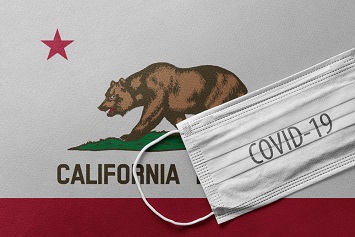As California hotels begin to reopen with the lifting of stay at home orders, the state Division of Occupational Safety and Health (Cal/OSHA) and California Department of Public Health have issued guidelines for the hotels and lodging industry. Cal/OSHA and CDPH released the guidelines and a checklist to help employers in the industry keep employees safe during the ongoing COVID-19 pandemic.
Hotels and lodging must create worksite-specific COVID-19 prevention plans like other employers in California. Some of the Cal/OSHA and CDPH recommendations are identical to guidance for other employers and guidance for general businesses from the Centers for Disease Control and Prevention (CDC) and Occupational Safety and Health Administration—encouraging handwashing, maintaining distances of at least six feet between employees and from members of the public, including in elevators, wearing cloth face coverings, using cleaning and disinfection products approved by the Environmental Protection Agency as effective against the SARS-CoV-2 virus, and staggering shifts and breaks to discourage employees from congregating.
Additional cleaning and disinfecting protocols for hotels and lodging include:
- Removing all reusable collateral, such as magazines, menus, local attraction details, and coupons from rooms; and providing such materials as single-use collateral or posting information electronically;
- Removing and transporting dirty linens from guest rooms in single-use, sealed bags and changing pillow protectors daily—bagging items in guest rooms to eliminate unnecessary contact while being transported;
- Washing all linen and laundry at high temperature in accordance with CDC guidelines;
- Allowing housekeepers extra time to clean rooms without loss of pay to account for required precautions and time to conduct more thorough cleaning and disinfection of rooms between guests;
- Considering leaving rooms vacant for 24 to 72 hours prior to or after cleaning;
- Removing a guest’s room from service in the event of a possible COVID-19 case. The room should not be returned to service until the suspected case has been confirmed or cleared;
- Implementing an enhanced sanitization protocol, ideally by a licensed third-party expert, before returning a room to service following a confirmed positive COVID-19 case;
- Installing hand-sanitizer dispensers, preferably touchless dispensers, at key guest and employee entrances, as well as at high-contact areas such as convention and meeting spaces, driveways, elevator landings, exercise areas, lobbies, pools, reception areas, restaurant entrances, and salons;
- Providing guests with an amenity bag during check-in containing a face covering, hand sanitizer, and a COVID-19 awareness card; and
- Where possible, equipping guest rooms with a bottle of sanitizer for guest use.
Guest Services Protocols
Physical distancing protocols for guest services include:
- Using physical partitions to separate guests from employees or providing visual cues, such as floor markings or signs to indicate where employees and/or guests should stand;
- Clearly marking appropriate distances where guests or employees might queue up, including check-in, check-out, elevator lobbies, coffee shops and dining rooms, and taxi and ridesharing lines;
- Conducting pre-shift meetings virtually or in areas that allow for appropriate physical distance;
- Considering employees’ requests for modified duties to minimize their contact with customers and other employees, such as managing inventory rather than working at the concierge desk or managing administrative needs through telework;
- Closing breakrooms, using barriers, or increasing distance between tables and chairs to separate workers and discourage congregating during breaks; or create outdoor break areas with shade covers and seating that ensures physical distancing;
- Screening guests and visitors upon arrival and asking guests to use hand sanitizer and wear a face covering; and
- Prominently displaying signs outlining proper face covering usage and current physical distancing practices in use throughout the property.

